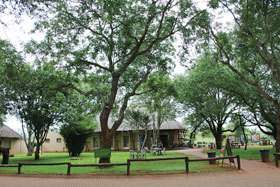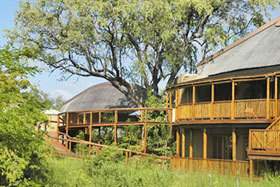
Birding Map of Kruger Park South-East Region
- The South-east
- Crocodile Bridge Area
- Crocodile Bridge to Sabie
- Lower Sabie to Skukuza
- Lower Sabie to Satara
- Crocodile Bridge to Malelane
- Crocodile Bridge to Skukuza
- Biyamiti Region
Crocodile Bridge Gate
Look out for the African Black Duck at the bridge over the Crocodile River. This dark-coloured duck is most active early in the morning and at sunset, when it is vulnerable to predators such as Verreaux's Eagle-Owl. There has been a report from Zambia of the African Black Duck being eaten by crocodiles, but this has not been recorded in Kruger.
Tinkerbirds are one of the specialities of the Crocodile Bridge Gate area. The Yellow-fronted Tinkerbird is closely associated with the Mistletoe (Loranthacaceae) family, playing an important role in pollination and seed dispersal. The Yellow-fronted Tinkerbird swallows and regurgitates Mistletoe seeds in less than a minute, ensuring that they are spread around the mother tree.
The area is also good for birds associated more with the Mozambican coastal plains, such as the Black-bellied Starling, which has a confusing call because it mimics both the Diderick Cuckoo and the Cardinal Woodpecker. It is the smallest and the least glossy of the starlings.
 CROCODILE BRIDGE CAMP
CROCODILE BRIDGE CAMP
Crocodile Bridge Camp overlooks the Crocodile River. The small camp (20 huts and a small camping area) is a handy stopover into the Park and a springboard to some excellent birding drives. However, peaceful as it may be, it is too close to the edge of Kruger to qualify as a wilderness experience. The low-level causeway is a good spot for waterbirds, but can be flooded after excessive summer rains.
Birding experts believe that this is the only reliable place in Kruger to see the Yellow-rumped Tinkerbird*, which forages around like a woodpecker in the upper tree canopy. A good Crocodile Bridge Birding test is to find Bennett's Woodpecker, Black Cuckooshrike, Lesser Honeyguide and Levaillant's Cuckoo
Where to stay Around Crocodile Bridge


